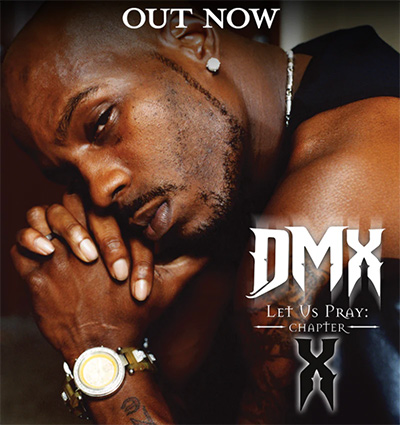Nas
One of the greatest hip-hop artists of all time, with classic albums and hit singles that cement his legendary status.

Beginning with his classic debut, Illmatic, Nas stood tall for years as one of New York City’s leading rap voices, outspokenly expressing a righteous, self-empowered swagger that endeared him to critics and Hip-Hop purists. Whether proclaiming himself “Nasty Nas” or “Nas Escobar” or “Nastradamus” or “God’s Son,” the self-appointed King of New York battled numerous adversaries for his position atop the epicenter of East Coast rap, none more challenging than Jay-Z, who vied with Nas for the vacated throne left in the wake of the Notorious B.I.G.’s 1997 assassination. Such headline-worthy drama informed Nas’ provocative rhymes, which he delivered with both a masterful flow and a wise perspective over beats by a range of producers: legends like DJ Premier, Large Professor, and Pete Rock; hitmakers like Trackmasters, Timbaland, and will.i.am; street favourites like Swizz Beatz, Megahertz, and the Alchemist; and personal favourites of his own like L.E.S., Salaam Remi, and Chucky Thompson. Nas likewise collaborated with some of the industry’s leading video directors, including Hype Williams and Chris Robinson, presenting singles like ‘Hate Me Now’, ‘One Mic’, and ‘I Can’ with dramatic flair.
Throughout all the ups (the acclaim, popularity, and success) and downs (the expectations, adversaries, and over-reaching), Nas continually matured as an artist, evolving from a young street disciple to a vain all-knowing sage to a humbled godly teacher. Such growth made every album release an event and prolonged his increasingly storied career to epic proportions.
Born Nasir Jones, son of jazz musician Olu Dara, Nas dropped out of school in the eighth grade, trading classrooms for the streets of the rough Queensbridge projects, long fabled as the former stomping ground of Marley Marl and his Juice Crew as immortalized in ‘The Bridge’. Despite dropping out of school, Nas developed a high degree of literacy that would later characterize his rhymes.
At the same time, though, he delved into street culture and flirted with danger, such experiences similarly characterizing his rhymes. His synthesis of well-crafted rhetoric and street-glamorous imagery blossomed in 1991 when he connected with Main Source and laid down a fiery verse on ‘Live at the Barbeque’ that earned him up-and-coming notice among the East Coast rap scene. Not long afterwards, MC Serch of 3rd Bass approached Nas about contributing a track to the Zebrahead soundtrack. Serch was the soundtrack’s executive producer and had been impressed by ‘Live at the Barbeque’. Nas submitted ‘Halftime’, and the song so stunned Serch that he made it the soundtrack’s lead-off track.
Columbia Records meanwhile signed Nas to a major-label contract, and many of New York’s finest producers offered their support. DJ Premier, Large Professor, and Pete Rock entered the studio with the young rapper and began work on Illmatic. When Columbia finally released the album in April 1994, it faced high expectations; Illmatic regardless proved just as astounding as it had been billed. It sold very well, spawned multiple hits, and earned unanimous acclaim, followed soon after by classic status.
The two years leading up to Nas’ follow-up, It Was Written (1996), brought another wave of enormous anticipation. The ambitious rapper, who had begun working closely with industry heavyweight Steve Stoute, responded with a significantly different approach than he had taken with Illmatic: where that album had been a straightforward Hip-Hop album with few pop concessions, the largely Trackmaster-produced It Was Written made numerous concessions to the pop-crossover market, most notably on the two hit singles, ‘Street Dreams’ and ‘If I Ruled the World (Imagine That)’. These singles — both of which drew from well-known songs, Eurythmics’ ‘Sweet Dreams (Are Made of This)’ and Kurtis Blow’s ‘If I Ruled the World’, respectively — broadened Nas’ appeal greatly and awarded him MTV-sanctioned crossover success. This same crossover success undermined some of his Hip-Hop credibility, however, and a minor backlash by purists resulted.
Nas addressed his critics on ‘Hate Me Now’, the second single from his next album, I Am (1999). The effort had originally been planned as a double-disc concept album comprised of autobiographical material, but when some of the tracks were leaked, I Am was scaled down and released as a single disc, with the DJ Premier-produced ‘Nas Is Like’ chosen as the lead single. Besides ‘Nas Is Like’ and ‘Hate Me Now’, which both broke into the Billboard Hot 100, ‘You Won’t See Me Tonight’ and ‘K-I-S-S-I-N-G’ also charted as singles. Originally scheduled by Columbia as a follow-up album comprised of the pirated material from the I Am sessions, Nastradamus (1999) — released in time for the holiday shopping season, roughly six months after its predecessor — was instead comprised almost entirely of new material, recorded quickly to meet the late-November release date. The album failed to garner the abundance of critical praise that had become customary for Nas. Moreover, unlike its two predecessors, Nastradamus failed to debut at number one on the Billboard 200 album chart, peaking at number seven instead, and failed to go double platinum. Though relatively disappointing on these counts, Nastradamus still went platinum and spawned two charting singles, ‘Nastradamus’ and ‘You Owe Me’, so the album wasn’t a failure, just disappointing.
In the late-’90s wake of The Notorious B.I.G.’s assassination, Nas reigned atop the New York rap scene alongside few contemporaries of equal stature. In addition to his endless stream of hits by the industry’s most successful producers — ‘If I Ruled the World’ (produced by the Trackmasters), ‘Hate Me Now’ (Puff Daddy), ‘Nas Is Like’ (DJ Premier), and ‘You Owe Me’ (Timbaland), among others — he co-starred in the Hype Williams-directed film Belly (1998) alongside DMX and contributed to the soundtrack.
Furthermore, Nas led a short-lived supergroup of New York rappers known as the Firm (also comprised of rappers Foxy Brown, AZ, and Nature, with producers Dr. Dre and the Trackmasters) and assembled a broad coalition of fellow Queensbridge rappers for the QB Finest compilation (2000). Amid all of this publicity, though, criticism began to mount. For every crossover fan Nas won with his dramatic MTV-aired videos, he lost support among purists, some of whom felt he had sold out, abandoning Hip-Hop ideals in favour of commercial success. The relative disappointment of Nastradamus was symptomatic of this downturn.
A series of incidents in 2001 provided a key turning point for Nas’ decline. The rapper’s personal life was becoming increasingly complicated; he encountered relationship trouble with the mother of his daughter and, of greater consequence, his mother began suffering from cancer. To make matters worse, longtime rival Jay-Z pointedly dissed Nas on ‘Takeover’, the much-discussed lead-off song from his acclaimed Blueprint album (2001). (It didn’t help that Jay-Z had risen atop the New York rap scene, giving him ample justification to call out Nas, who had receded from the public eye while he dealt with his personal issues.)
Nas responded strikingly in December 2001 with Stillmatic, the title a reference to his classic Illmatic album, which had been released nearly a decade earlier. Stillmatic opened with the song ‘Ether’, a very direct response to Jay-Z, followed by the aggressive lead single ‘Get Ur Self A….’ These two songs, in particular, rallied the streets while the moving video for ‘One Mic’ received heavy support from MTV. Throughout 2002, Nas continued his comeback with a number of guest appearances, among them Brandy’s ‘What About Us?’, J-Lo’s ‘I’m Gonna Be Alright’, and Ja Rule’s ‘The Pledge’, as well as yet more news-making controversy, this time involving his no-show at popular radio station Hot 97’s annual Summer Jam.
Amid all of the drama, Nas managed to salvage his esteemed reputation and reclaim his lofty status atop the New York scene. Stillmatic earned immediate acclaim from fans and critics alike and sold impressively, while Columbia furthered the comeback campaign with two archival releases, one of the remixes (From Illmatic to Stillmatic), the other of outtakes (The Lost Tapes, which notably includes some of the pirated I Am material). Then at the end of the year, Columbia released a new studio album, God’s Son (2002), and Nas once again basked in widespread acclaim as the album sold well, spawned sizable hits (‘Thugz Mansion’, ‘Made You Look’, ‘I Can’), and received rampant media support. Two years later Nas returned with Street’s Disciple (2004), a sprawling double album that delved deeply into various issues, most notably politics and his impending marriage to Kelis. The two-sided ‘Thief’s Theme’/’You Know My Style’ single dropped in summer 2004, several months before the album’s release, and was followed that fall by the proper lead single ‘Bridging The Gap’.
Street’s Disciple came and went, however, without the level of commercial success that had become customary, as it struggled to go platinum. More troubling, the new kid on the block 50 Cent took a swipe at Nas on ‘Piggy Bank’, a call-out song on The Massacre (2005), further bringing the veteran rapper’s status into question.
In a surprising turn of events later that year, Nas made a surprise appearance at Jay-Z’s much-hyped I Declare War concert in October 2005. Together the two rivals performed ‘Dead Presidents’, Jay-Z’s 1996 debut single; the classic song, produced by Ski Beatz and featured on Reasonable Doubt (1996), features a prominent sample of ‘The World Is Yours’, a 1994 classic by Nas. The reconciliation of Jay-Z and Nas opened the door to a deal with Def Jam. The record label, overseen by Jay-Z as president at the time, signed Nas and, in turn, released Hip-Hop Is Dead (2006). The album didn’t sell especially well, but it did inspire a lot of commentary about the state of Hip-Hop and included a much-anticipated collaboration with Jay-Z, ‘Black Republican’. A politically-charged self-titled album, at one point considered to be titled N*gger, materialized in 2008, and not without some controversy of its own. Following his divorce from Kelis, Nas released Distant Relatives, an album-length collaboration with Damian “Junior Gong” Marley, in 2010. Two years later, his divorce would be addressed on the venomous Life Is Good, an album that featured Nas holding Kelis’ wedding dress on the cover.
Words: Jason Birchmeier












